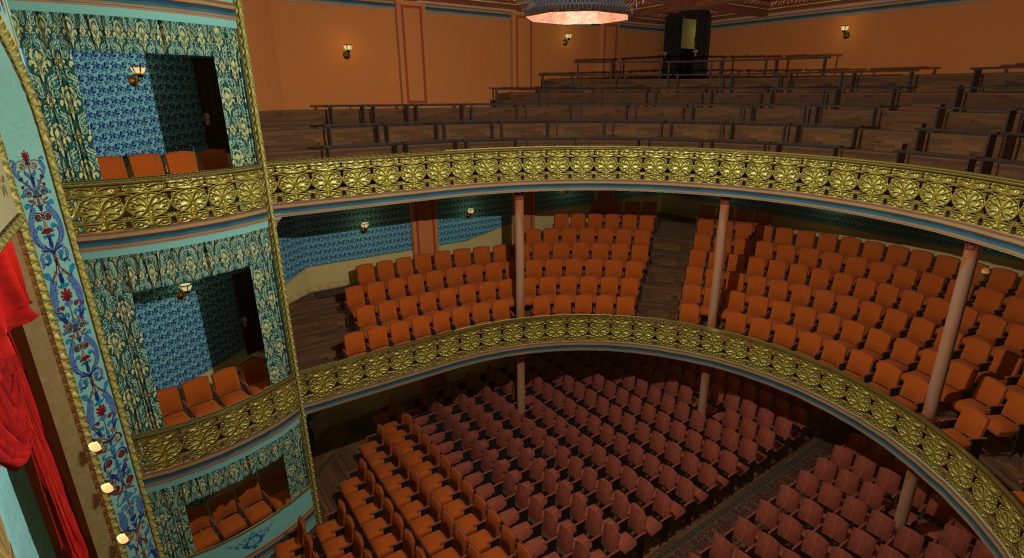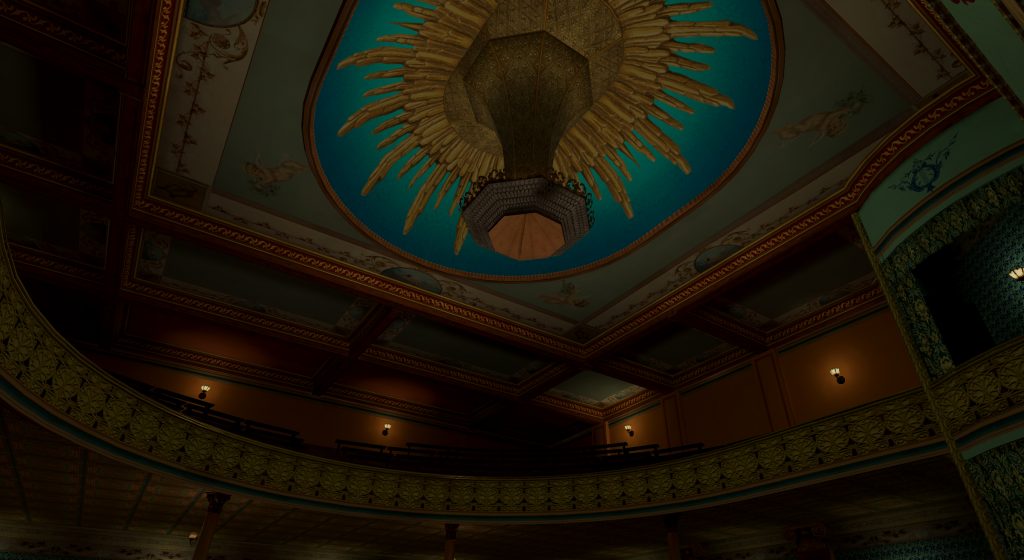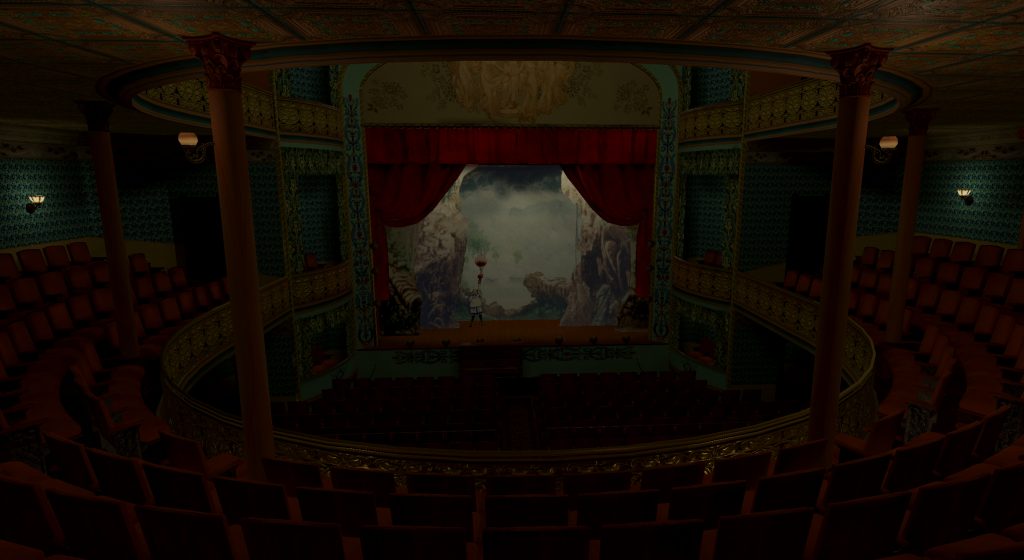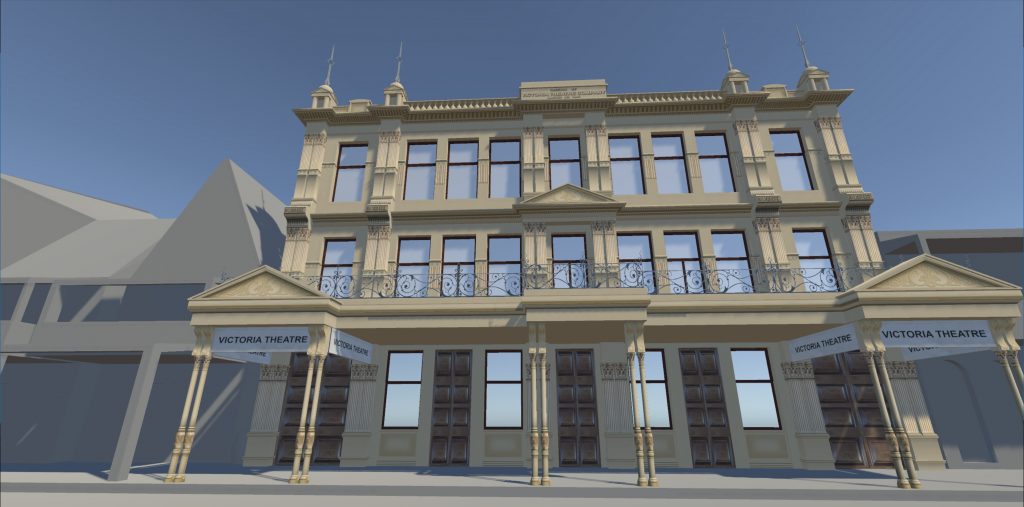
The University of Newcastle’s IT Innovation Team have just released amazing screenshots from the virtual reality model of the Victoria Theatre, under construction as at September 2018.


They are now entering the final stages of their work on the 3D Virtual Reality recreation of the 1891 Victoria Theatre in Perkins Street Newcastle, and are currently working on the performance and the lighting, so they promise that it will look even much better in coming weeks.

In the meantime, Dr. Gillian Arrighi and Dr. Helen English, currently overseas on research appointments, are also arranging the rehearsal, recording and preparation of snippets of concert music performed at the Victoria Theatre to accompany the virtual performance within the virtual reality model. The pieces of music that have been requested include Evangeline’s Song and Dance, Country Girls, Three Little Maids (from the Mikado).




The UON IT Innovation began work on the 3D Victoria Theatre in July 2018, and according to Gaute Rasmussen:
“The digital reconstruction project is progressing nicely. Our challenge is to recreate the theatre the way it looked in 1891, when it opened. We created the outside of the building first, and got that to a level where we were satisfied with it, and over the last couple of months we’ve done a lot of work on the inside of the building.”

The project was initially adopted to support the research work of Dr Gillian Arrighi, Convenor, Creative and Performing Arts, in the University of Newcastle’s School of Creative Industries, who along with Stephanie Holm have been funded by the ARC, through the LIEF scheme, under the aegis of the AusStage Phase 6 Visualising Venues in Australian Live Performance project (LE170100003), a national project involving 12 universities, administered by Finders University.

Gaute Rasmussen continues:
“We have access to floor plans of the building from 1921, which we’re using as a base. But the building underwent quite a few changes between 1891 and 1921, so even the floor plans from 1921 can’t be trusted all that much. The biggest change is the removal of the hotel. There used to be a hotel at the front of the building, from ground level to the top floor, which was removed after they lost their liquor license. With the hotel gone, the main auditorium was extended all the way out to the front wall. There also used to be two entrances, one on the south end and one at the north end of the building. These were replaced with a single entrance. In 1891 there used to be a dress circle and an upper circle, but when the dress circle was extended backwards (and upwards) there was no longer any room for the upper circle, so that was removed. There also used to be private boxes on each floor in 1891, which were removed.
So in our digital reconstruction we’ve had to work backwards from the 1921 floor plans, and essentially unwind the 30 years of changes that we know about to get back to 1891. We’ve gotten a lot of clues from newspaper articles describing the theatre in the early days, as well as references from other buildings which we know were built in a similar style. Our main point of reference there has been the Villa Alba in Melbourne.
At this stage we have completed all the main areas of the theatre: exterior, vestibules, stair cases, stalls area, dress circle, upper circle, private boxes, orchestra pit, and stage area. We’re now going through and improving areas that we’re not quite happy with and adding extra bits of polish.”

“One of the most exciting bits of extra polish is that we’re trying to create a semblance of a performance on the stage. Our aim is to make it so that when people step into the virtual reality representation of the theatre they’ll be able to see the curtains go up and see some actors moving around on stage. For that we’re using an old photo of a performance, which we’re then breaking down into separate pieces and separate layers so that we can represent it in three dimensions as characters and stage props in the virtual reality experience.
We still have a few weeks to go, and we’re doing everything we can to make the experience as magical and truthful to the original as we can. We can’t wait to show this off and hopefully make it available to a wider audience.” – Gaute Rasmussen, IT Innovation Team, University of Newcastle.





With the assistance of archives of the University’s Cultural Collections, New South Wales State Archives and Records Authority and Local Studies in the Newcastle Regional Public Library among others, and using detailed descriptions published in the newspaper reports of the time such as http://nla.gov.au/nla.news-article19000995 and http://nla.gov.au/nla.news-article135841063 both Gaute Rasmussen and Vendela Pento have woven a magical spell to recreate the original theatre that is astonishing and impossible to describe without experiencing it within the headset and virtual reality environment.

Click here for all posts relating to this exciting Project:
https://hunterlivinghistories.com/category/victoria-theatre-3d-project/
Gionni Di Gravio
University Archivist
Chair, UON Hunter Living Histories

Online Version:
“Work is nearing completion on a landmark project to recreate Newcastle’s Victoria Theatre”
By Matthew Kelly, Newcastle Herald.
just awesome, what an amazing job you have done congrats
Fantastic work well done (having worked at the Victoria Theatre in 1962 so glad it is being restored…